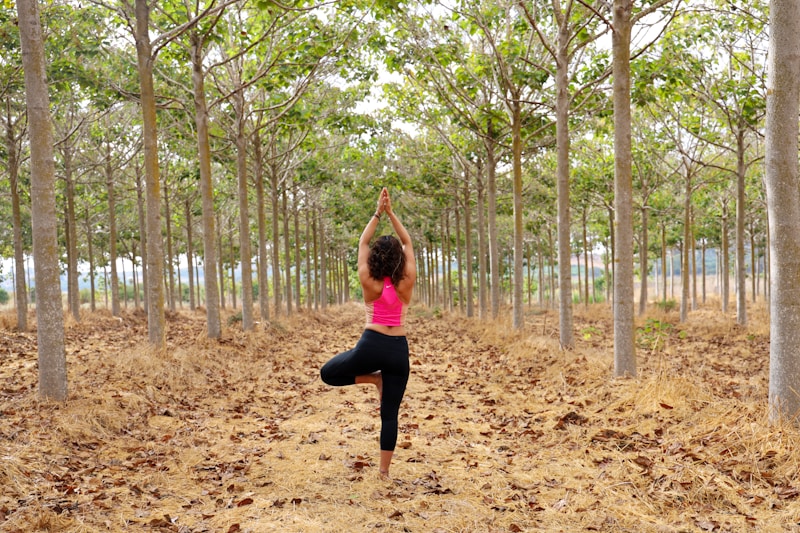As yoga teachers and students, how important is it to know about the philosophy of the yoga we teach?
Yoga Philosophy is a vast subject; the Vedas, the Sutras of Patanjali, the Bhagavad Gita, and the Upanishads, to name but a few. You could spend a lifetime studying just one of these. But yoga is a physical practice, so do we need to know about the philosophy of it to be fully-rounded yogis?
The answer is – why don’t you try it to see?
While we’re in lockdown, we have no choice but to become stiller. We can’t rush about, make plans and run into the future. We have more present moments. So let’s take this time as a gift to expand our mental and spiritual worlds, while our physical world can expand only as far as the local park.
Why study yoga philosophy?
Let’s look into the ‘why’ a bit more. In ancient times yoga was passed from guru to shishya (pupil). The knowledge of yoga was passed on orally, but most of this teaching is now lost.
What was retained is now written down in books. ‘It is difficult to learn through books, but they are our only means of progress until we come across that rarity, a true teacher or master’ says B K S Iyengar in his introduction to his ‘Light on the Yoga Sutras of Patanjali’.
The yoga that we practice is incredibly important but, once we add in the theoretical knowledge, there comes a deepening understanding of WHY we do all this stretching stuff in the first place.
It becomes less about how many likes we can get for our latest yoga post on Instagram and more about the deep-seated motivation for getting on the mat every day.
But it’s important to remember that knowledge without experience is meaningless. It is better to come to the philosophy of yoga once you have an established home practice; then the meaning of what you’re reading is illuminated by your own experience.
A (very) brief history of Yoga Philosophy
We don’t really know when yoga began, but the estimate is around 2,500 years ago. Modern Yoga is an amalgam of lots of different Indian forms, but the earliest mention of yoga in a written form is in the Upanishads and the Mahabharata.
The Upanishads are part of the Vedas (meaning ‘wisdom’) – ancient Sanskrit texts, which are a collection of spiritual teachings and the basis of Hinduism. The Mahabharata is an epic tale (the other one is the Ramayana), which tells of the wars between two groups of cousins, as well as lots of devotional and spiritual teachings.
Within the Mahabharata is the Bhagavad Gita, in which Krishna’s teaching is infused with yogic concepts.
Following on from these works is possibly the most important philosophy of Yoga; the Yoga Sutras of Patanjali. Written somewhere between 500 and 200 BC, it is a collection of 196 aphorisms covering all aspects of a yogic life. It is called Yoga Darshana, which means Yoga Mirror, as the effect of yoga is to be like a mirror held up to show the seeker their true self.
In the 15th century, the sage Svatmarama wrote the Hatha Yoga Pradipika (Light on Hatha Yoga), which is much closer to a manual than the other works and is more like the yoga that we recognise and practice today.
Where to start
But where do we start? As yoga teachers, the most obvious place to start is the Yoga Sutras of Patanjali. As an Iyengar yoga teacher, I start all my classes with the traditional chant to Patanjali, so it would be a bit remiss of me to chant away to some sage I have no idea about.
However, if you’re expecting a handy guide on how to do yoga, you’ll be disappointed. The sutras are a series of aphorisms that take you deeper and deeper into the heart of yoga.
First of all, it helps to invest in a good translation, as it’s not an easy text. The one that I go to is B K S Iyengar’s ‘Light on the Yoga Sutras of Patanjali’, but there are other good versions out there.
There are four sections or padas of the book.
- Samadhi pada – on concentration, or contemplation
- Sadhana pada – on practice
- Vibhuti pada – on properties and powers
- Kaivalya pada- on freedom from attachment
The first deals with where you’re heading – samadhi. It’s an aspirational way to start and is directed at those who are already well on their way to enlightenment. The second sutra in this section is the definition of yoga that most of us have heard of:
Yoga is the cessation of movements in the consciousness
The second chapter is for the less spiritually evolved (so, most of us) and covers the eight limbs of yoga, as well as the three great paths of yoga; Karma Yoga, Jnana Yoga, and Bhakti Yoga. The third chapter is about the divine effects of yoga and the eight supernatural powers, or siddhis. These siddhis include the ability to change size, weight, to attain every wish and to gain power over all things – so eat your heart out, Marvel.
The final chapter is about achieving kaivalya when the sadhaka (seeker) attains liberation from the extremes of pleasure and pain and lives in a state of virtuous awareness.
Things to bear in mind
It’s not a religion. According to Patanjali, those who practice yoga can be of any faith, colour, creed, or sexual orientation (well, he didn’t say that, but I’m extrapolating). Anyone can do yoga, and their beliefs and values will be strengthened by the practice and philosophy.
Don’t be overwhelmed. Yoga philosophy was studied by sages who literally did nothing else, for their whole LIVES. Even in lockdown we still have a whole host of ‘things to do’. I return to the same chapters of my books over and over again. Sometimes, if I have 5 minutes, I just open the book at a random page and read what swims into view and just digest that one section.
Take notes. Have a notebook that you keep to hand, and then when something makes sense to you, jot it down. Or keep a handy guide of the meanings of some of the recurring words, like samadhi.
Where to finish
This is a tongue-in-cheek heading, as anyone who even delves just the tiniest bit into this vast subject knows that there is no ‘finishing’ this subject. Just as we never stop being students of yoga, we never stop being learners of yoga philosophy and where yoga strengthens body and mind, the philosophy of yoga brings spiritual health to enrich your yoga journey.













